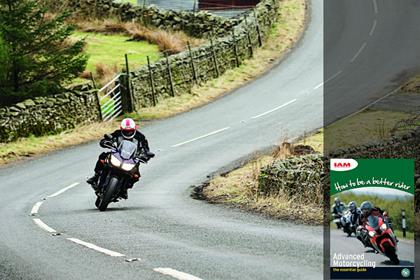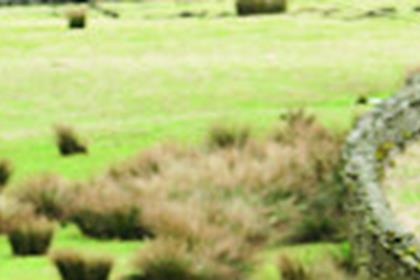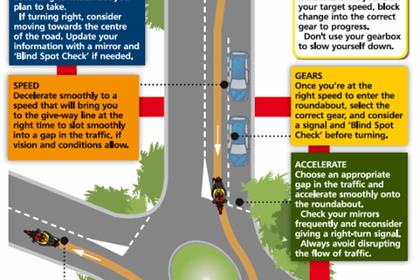MCN IAM Better Riding Guide: A planned system of riding
Approaching riding in a planned way will quickly help you to improve your motorcycling skills.
It will help you spot hazards earlier and plan your progress in an efficient way.
Hazards you may encounter can range from physical features such as junctions, roundabouts, bends and hill crests, to the movements of other road users, changes in the road surface and problems that are created by the weather.
If you’ve just started to ride or you’re returning after a break, learning the IPSGA system will help you to get ahead – to become a smoother rider.
This guide from the IAM (Institute of Advanced Motorists) and MCN explains a useful five-part riding system called IPSGA that you can apply to every manoeuvre you make.
The letters relate to the five elements of the system. Here’s how it works.
- INFORMATION Constantly observe everything around you – including what is happening behind. You then need to process this information. Use the observations to plan how most effectively to deal with all the hazards you have identified. As well as absorbing information you also need to give information. Always give a clear signal when it will inform other road users of your intentions. Indicators are the most common method but you can also use arm signals, the horn or headlight.
- POSITION Once you’ve considered signals, position your bike correctly on the road. However, it’s worth considering a check in your ‘blind spot’ before you change course.
- SPEED Adjust your speed according to the hazard. Do this by using your brakes, engine braking or acceleration. Once you have reached the correct speed, it is advisable to check your mirrors again.
- GEAR Now that you are travelling at the correct speed to deal with the hazard, make sure you select the correct gear. On some occasions you may need to change gear just before you finish braking. Once again you should consider a ‘blind spot’ check at this point.
- ACCELERATION As soon as your bike is on a straight course after the hazard, accelerate to an appropriate speed to continue your progress.
![]()
This IPSGA system should be practised until it becomes second nature and a completely natural thing to do. The good thing is that it can be applied to any riding situation or manoeuvre.
The idea is to use the steps in sequence, as outlined above. However, it is important to note that the information element is intended to overlap the other four parts of the sequence. This means that if the circumstances change as you plan your progress, you can go back to the relevant point in the IPSGA sequence and begin planning with the new hazard or hazards in mind.
It’s also worth stressing here that all aspects of the system should be considered and not just applied automatically. You need to think about a situation rather than just reacting.
There are many benefits with a system like IPSGA. As well as raising awareness of what’s going on around you, it also ensures that your actions will not take any other road users by surprise. That said, do keep an eye on other people to make sure they have seen you and are acting accordingly.
To see how IPSGA is applied in typical riding situations, have a look at the graphic below which shows how the system would work in a typical situation such as turning right at a roundabout.
![]()
If you found this useful, check out our other advice columns on braking, motorways, filtering, roundabouts and cornering.
For more riding advice, get a copy of How to be a Better Rider, Advanced Motorcycling the Essential Guide. It costs £9.99 and is available from the IAM.








